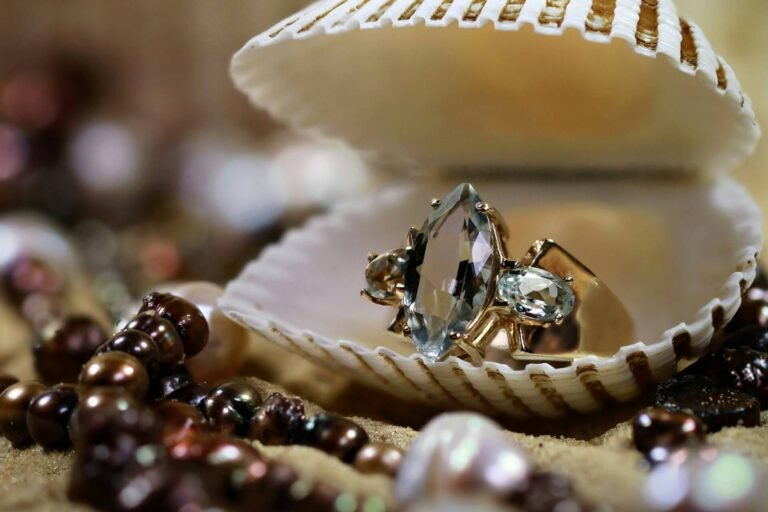Investing in precious metals is a strategic move for diversifying your investment portfolio, hedging against inflation, and preserving wealth. This comprehensive guide to precious metal investments will provide you with all the information you need to make informed decisions when buying precious metals.
Key Takeaways on Precious Metals Buying Guide
- Diversification Benefits: Investing in precious metals like gold, silver, platinum, and palladium can diversify your portfolio, reducing risk and potential losses during market volatility.
- Understanding Market Trends: Stay informed about market trends and economic factors that influence precious metal prices, such as inflation, geopolitical events, and currency fluctuations.
- Types of Investments: Learn about different forms of precious metal investments, including physical bullion, ETFs, mining stocks, and mutual funds, to determine which aligns best with your financial goals.
- Storage and Security: Consider secure storage options for physical metals, such as safe deposit boxes or specialized vault services, to protect your investment from theft and damage.
- Transaction Costs and Fees: Be aware of transaction costs, dealer premiums, and potential tax implications associated with buying and selling precious metals.
- Long-Term Value: Precious metals are often seen as a hedge against inflation and currency devaluation, maintaining their value over time and providing financial security.
- Avoiding Scams: Ensure you buy from reputable dealers and verify the authenticity of the metals to avoid counterfeit products and investment scams.

Introduction to Precious Metals
Precious metals like gold, silver, platinum, and palladium have been valued for centuries. These metals are not only used in jewelry and industrial applications but silver coins are also regarded as a stable investment option. Here’s a closer look at each:
- Gold: Known for its rarity and value, gold is a popular choice among investors. It is a safe-haven asset during economic downturns.
- Silver: More volatile than gold but has significant industrial uses, which makes it an attractive investment.
- Platinum: Rarer than gold and silver, with major applications in the automotive industry.
- Palladium: Also used in the automotive industry, palladium has seen significant price increases in recent years.
Benefits of Investing in Precious Metals
- Diversification: Adding precious metals to your investment portfolio can reduce risk.
- Inflation Hedge: Precious metals often retain their value during inflationary periods.
- Liquidity: These assets can be easily bought and sold in the market.
- Tangible Assets: Unlike stocks or bonds, precious metals are physical assets that you can hold.
How to Buy Precious Metals
- Bullion vs. Coins: Bullion refers to precious metals in bulk form, while coins are minted by governments and may have numismatic value.
- Spot Price: The current market price for a precious metal. It’s essential to track this to make informed buying decisions.
- Premiums and Markups: Dealers add a premium to the spot price. Compare different dealers to get the best deal.
- Storage Options: You can store precious metals at home, in a bank safe deposit box, or with a professional storage service.
Steps to Buying Precious Metals
- Determine Your Budget: Decide how much you want to invest.
- Choose the Type of Metal: Decide whether you want to buy gold, silver, platinum, or palladium.
- Select a Reputable Dealer: Look for a dealer with good reviews and a solid reputation.
- Decide on the Form: Choose between coins, bars, or ETFs (Exchange Traded Funds).
- Make the Purchase: Execute your purchase either online or in person.
Understanding the Precious Metals Market
- Market Trends: Keep an eye on market trends and economic indicators, including the precious metals market, which often has an inverse relationship with the stock market and serves as a safe-haven asset during stock market volatility.
- Historical Performance: Analyze the historical performance of the metal you are interested in.
- Geopolitical Factors: Political instability can drive up precious metal prices.
- Supply and Demand: Changes in industrial demand and mining supply can impact prices.
Risks of Investing in Precious Metals
- Market Volatility: Prices can fluctuate significantly.
- Storage and Insurance Costs: Physical storage can incur additional costs.
- Liquidity Issues: While generally liquid, there may be times when selling is not as easy.
Tips for New Investors
- Start Small: Begin with a small investment to understand the market better.
- Educate Yourself: Read books, attend seminars, and follow market news.
- Seek Professional Advice: Consider consulting with a financial advisor.
- Avoid High Premiums: Be cautious of buying from sellers with high premiums over the spot price.

Precious Metals Buying Guide: Financial Aspects and Common Misunderstandings
Financial Aspects of Investing in Precious Metals
Initial Investment Costs: Purchasing precious metals involves several costs beyond the spot price to buy physical gold. These include premiums added by dealers, storage fees if you opt for professional storage, and potentially insurance costs to protect your investment.
Premiums and Markups: Dealers often add a premium to the spot price of precious metals, which covers their costs and includes a profit margin. This premium can vary significantly between dealers and types of physical precious metals used. It’s essential to shop around and compare prices to ensure you get the best deal.
Storage and Insurance Costs: If you choose to store your precious metals in a secure location, such as a bank’s safe deposit box or a private vault, you’ll incur storage fees. Additionally, insuring your precious metals is advisable, especially if you keep them at home. Insurance costs can add up, impacting the overall return on your investment.
Liquidity and Selling Costs: While precious metals are generally considered liquid assets, selling them involves costs. Dealers may offer lower buyback prices, and you may incur costs for shipping and handling if you sell physical silver online.
Market Volatility: The prices of precious metals can be highly volatile, influenced by various factors including economic conditions, geopolitical events, and changes in supply and demand for industrial metal. This volatility can impact the value of your investment, making it essential to have a long-term perspective and not panic during short-term fluctuations.
Tax Implications: The sale of precious metals is subject to capital gains tax, and the rates can vary depending on how long you’ve held the investment and your overall tax situation. Understanding the tax implications of physical gold, can help you manage your investment more effectively and avoid unexpected liabilities.
Common Misunderstandings
Guaranteed Returns: One common misconception about rare metals is that precious metals always provide high returns. While they can be a good hedge against inflation and economic instability, their performance is not guaranteed, and they may not always outperform other investment vehicles like stocks or real estate.
Physical vs. Digital Ownership: Some investors believe that owning physical metals is the only way to invest in precious metals. However, there are other options, such as ETFs and mutual funds that invest in mining companies. These alternatives can offer liquidity and ease of trading, though they do not provide the tangible ownership of physical precious metals prices.
Diversification: Another misunderstanding is that investing solely in precious metals provides sufficient diversification. While precious metals can be a valuable part of a diversified portfolio, relying exclusively on them can expose you to market risks. It’s crucial to balance your physical metal investment across various asset classes.
Storage Security: Many investors assume that storing precious metals at home is safe as long as they have a secure hiding spot. However, without professional storage solutions, you risk theft, loss, or damage to rare metal. Professional storage facilities offer high-security measures and insurance, providing peace of mind.
Sparsely Discussed Factors
Environmental and Ethical Considerations: The mining of precious metals can have significant environmental impacts, including habitat destruction and pollution. Additionally, some mining practices involve human rights abuses. Considering these factors can align your precious metals investments with your values.
Geopolitical Risks: Precious and other precious metals, are often sourced from politically unstable regions, which can affect supply and prices. Understanding these geopolitical risks can help you make more informed investment decisions.
Technological Advances: Advances in technology, such as improved mining techniques or new applications for precious metals, can influence mining stocks and their market value. Staying informed about technological developments can provide insights into potential market trends.
Alternative Uses: Precious metals have industrial applications beyond investment and jewelry, such as in both electronics and industrial products and healthcare. Understanding these uses can provide a broader perspective on demand and market dynamics.
Let’s wrap this up…
Investing in precious metals can be a wise decision for diversifying your portfolio and protecting against economic uncertainties. By understanding the stock market, choosing the right form of investment, and considering associated risks, you can make informed decisions that benefit your financial future.
Navigating the complexities of a precious metals portfolio and metal investments requires a deep understanding of various financial aspects, addressing common misunderstandings, and considering sparsely discussed factors. Being well-informed helps mitigate risks and align your investment decisions with your financial goals.
For more detailed guides and insights on investing, visit HowToKings.com, your comprehensive
*Editor’s Note: The information in this article is intended for your educational use only and is not a substitute for professional medical advice, diagnosis, or treatment. Always seek the advice of your physician or other qualified health providers with any questions you may have regarding a medical condition before undertaking any diet, supplement, fitness, or other health programs.




